In today’s highly competitive market, companies strive to gather, organize, and utilize information to achieve their goals.
That’s why knowledge bases are essential.
In this article, we’ll explore the two main types of knowledge bases—internal and external.
What are they, who uses them, what are their main differences, and finally, do you need both?
Did we spark your curiosity?
In this article, you’ll find out everything you need to know about the two!
What Is an Internal Knowledge Base
You’ll be hard-pressed to find a company that doesn’t want their employees to do their job as efficiently as possible and to the best of their ability.
After all, that’s the only way to compete with the other organizations in your niche.
So, how to ensure that employees of any department have what they need for maximum productivity?
By providing them with every piece of information and knowledge they require to accomplish that.
That’s what an internal knowledge base is for. Andy Cook, co-founder and CEO of Tettra, explains in simple terms:

Illustration: Archbee / Data: Tettra
Essentially, an internal knowledge base is a source of information about every facet of the company relevant to employees’ day-to-day work.
That can include a wide range of knowledge, from onboarding procedures for new hires to insights into customer behavior when using your product.
The point is that it helps employees do their jobs.
Below, you can see some categories of knowledge that should be included in an internal knowledge base.
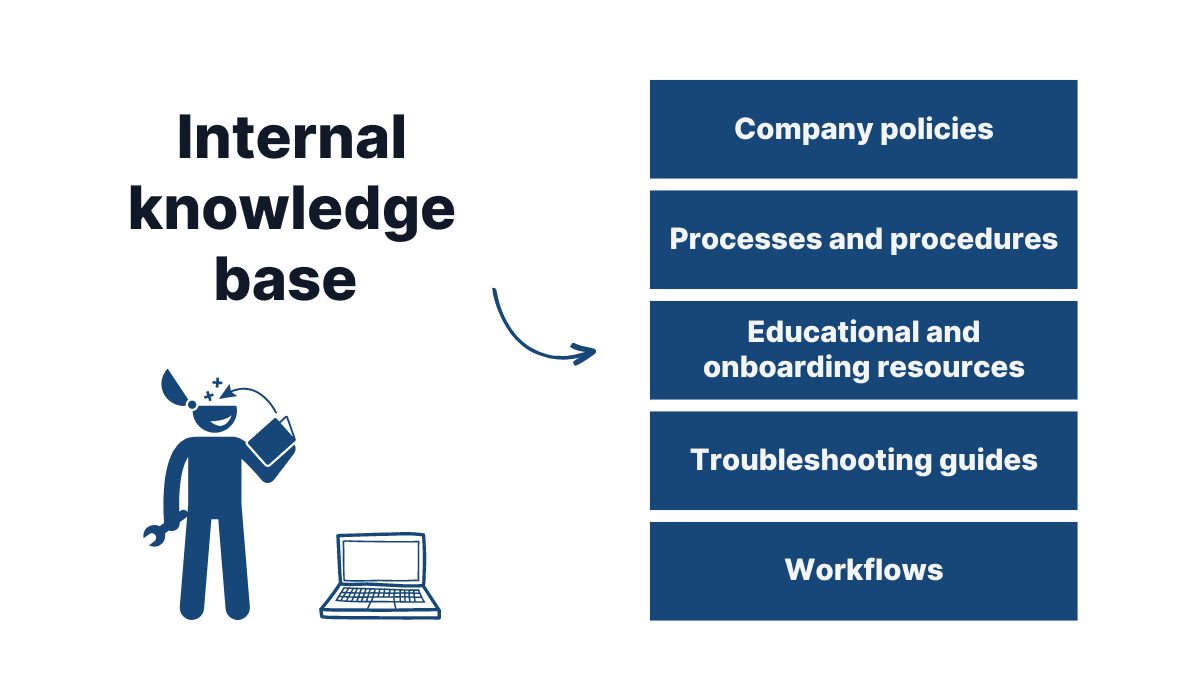
Source: Archbee
Let’s look at one example of an internal knowledge base and its contents.
Below is a screenshot from Archbee’s employee handbook.
As you can see, it provides information about the company’s work policy.
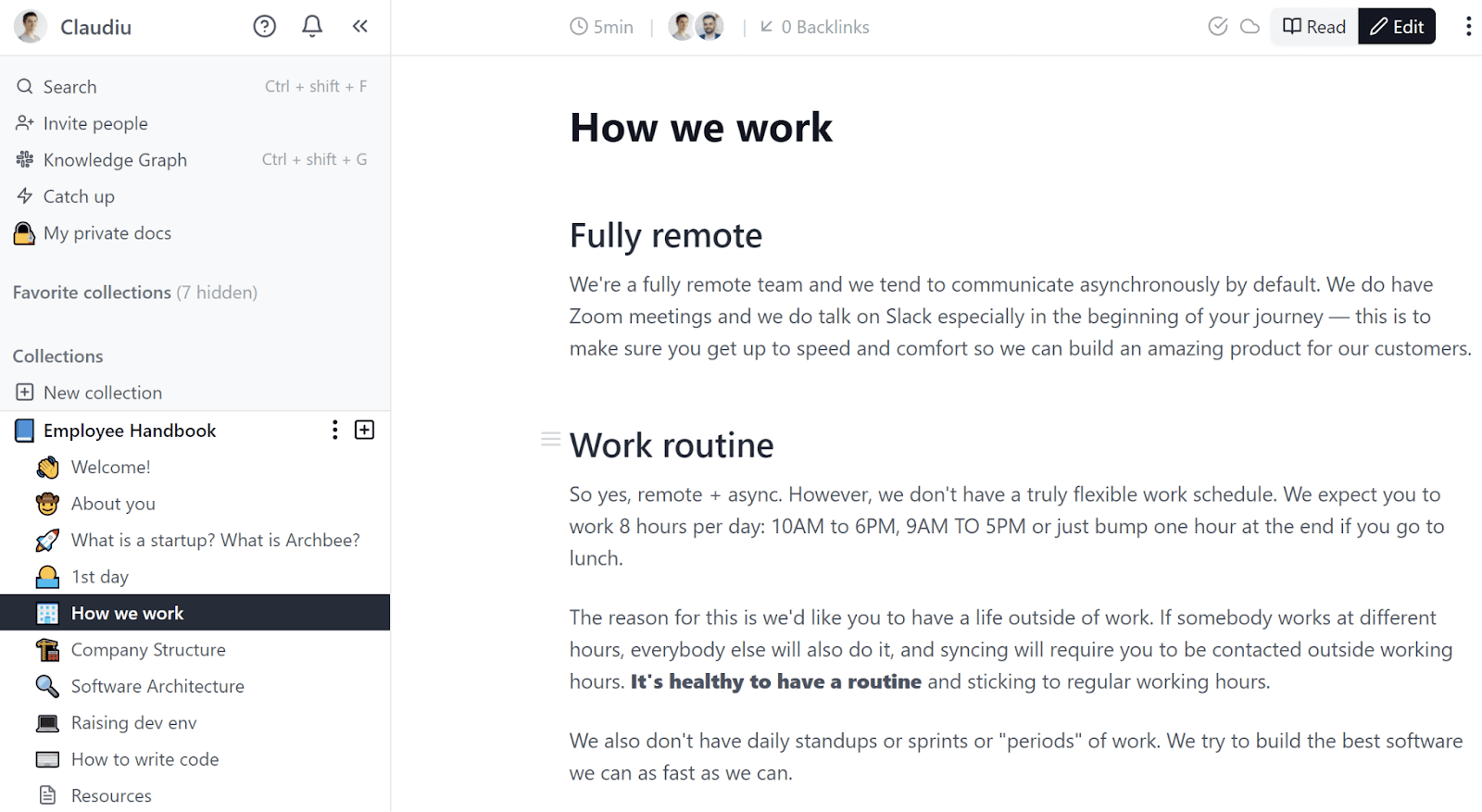
Source: Archbee
That information is crucial for the employees—they need to know what the company expects from them regarding availability at work, communication, work routine, etc.
Similarly, providing that information is also beneficial for the company itself because employees have all the knowledge they need about the work routine and what’s expected of them.
That leads to less confusion, more productivity across the organization, and, simply put, better results.
What Is an External Knowledge Base
As we’ve mentioned, creating a knowledge repository for the company’s employees is immensely important. However, creating such a resource for customers is also vital.
An external knowledge base can cover all the customers’ needs regarding the information about your product.
Here’s how Stella Inabo, a content writer and marketer, succinctly states what external knowledge bases are:
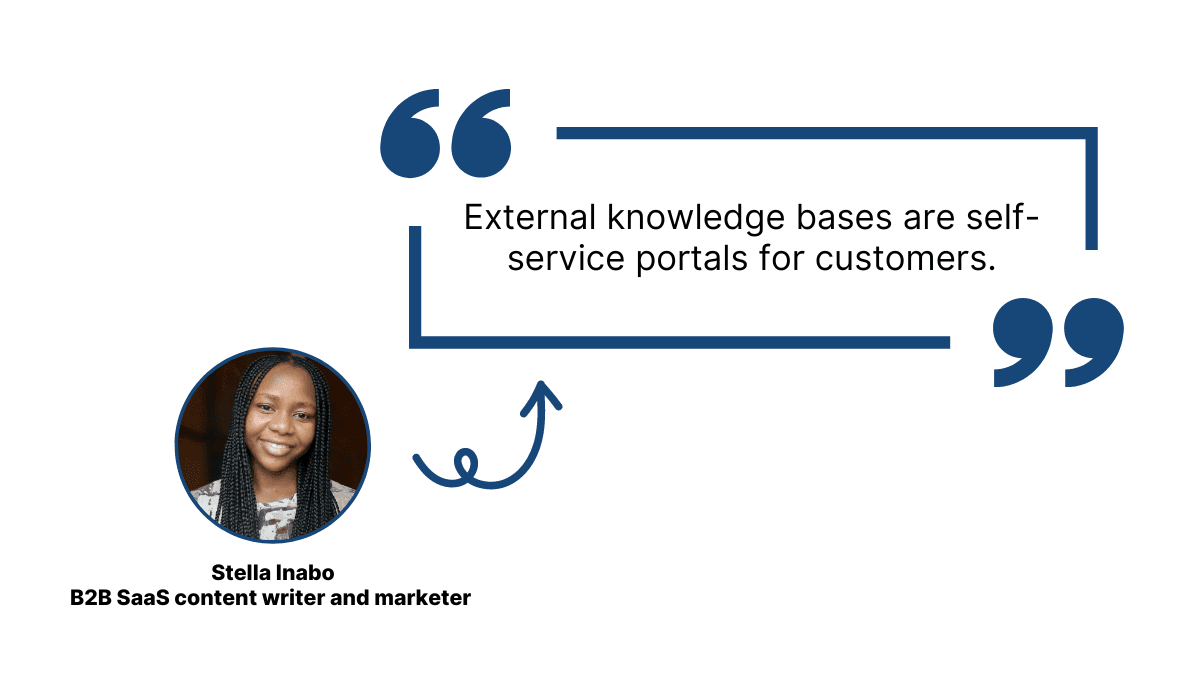
Illustration: Archbee / Data: Zendesk
That’s the essence of what an external knowledge base is.
It’s a portal to your product, providing all the information necessary for customers to use it successfully.
At the same time, it’s made for self-service, meaning that customers access it at their convenience, read what they want, and use the knowledge they need.
The point is that you provide your users with as much knowledge as possible so they can truly understand how to use your product independently.
For example, take a look at the categories in Buffer’s external knowledge base:
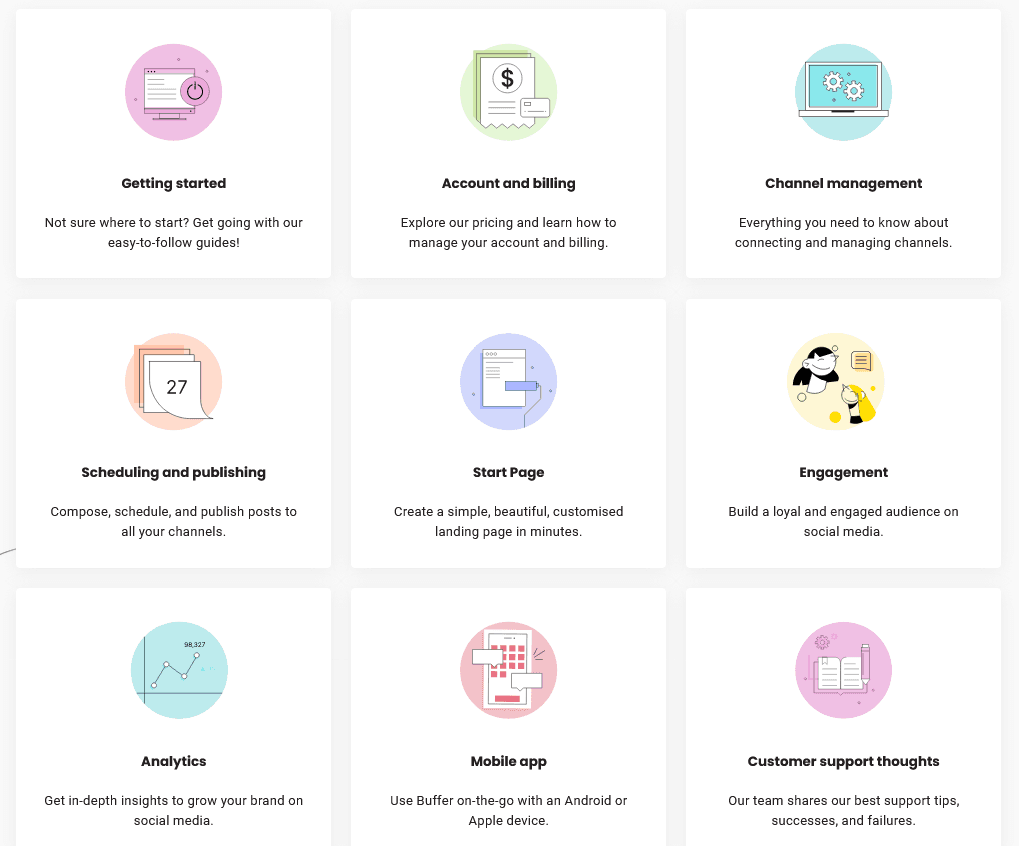
Source: Buffer
Even if a customer doesn’t know the first thing about using Buffer’s software product, they can learn essentially anything with the information Buffer’s team provides.
For instance, if customers don’t know what Buffer is, they can read an article about it, watch a demo, and follow links to more helpful information.

Source: Buffer
On the other hand, customers who are more experienced in using the product can dive into more complex topics, like scheduling posts.
If they choose to do so, they can follow a step-by-step guide enriched with screenshots and GIFs or watch a video walkthrough.
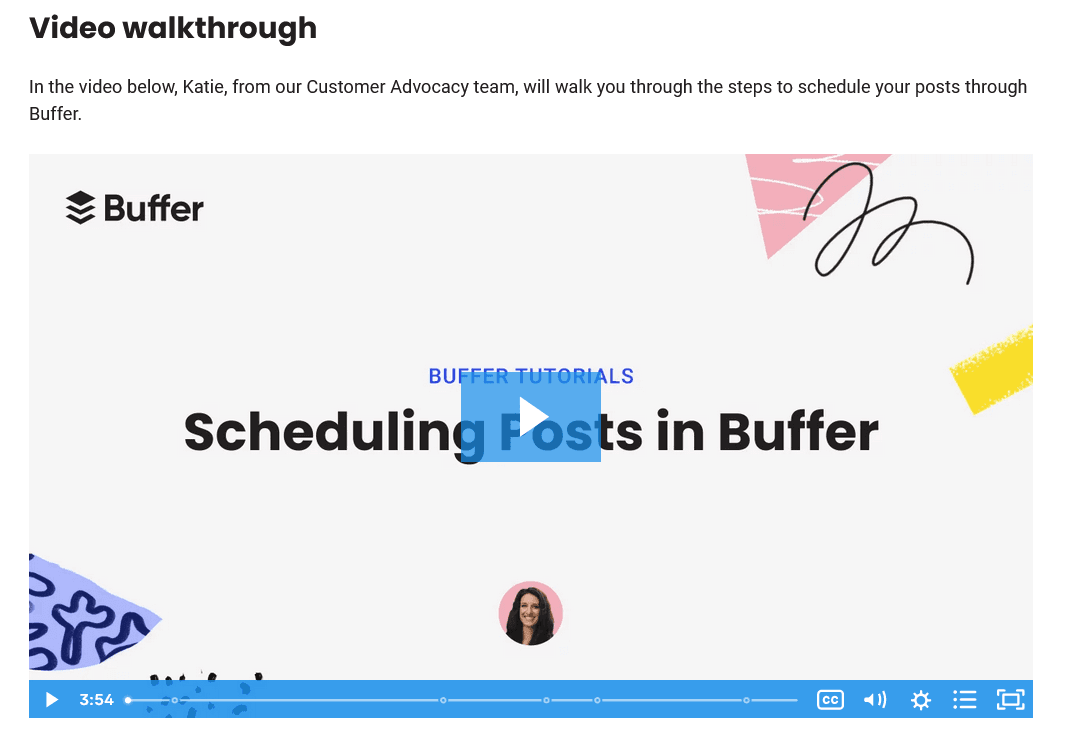
Source: Buffer
Those examples from Buffer’s external knowledge base are just two out of hundreds of guides, tutorials, help articles, and other pieces of information for their users.
Here are some more knowledge categories that should be in customer-faced knowledge bases:
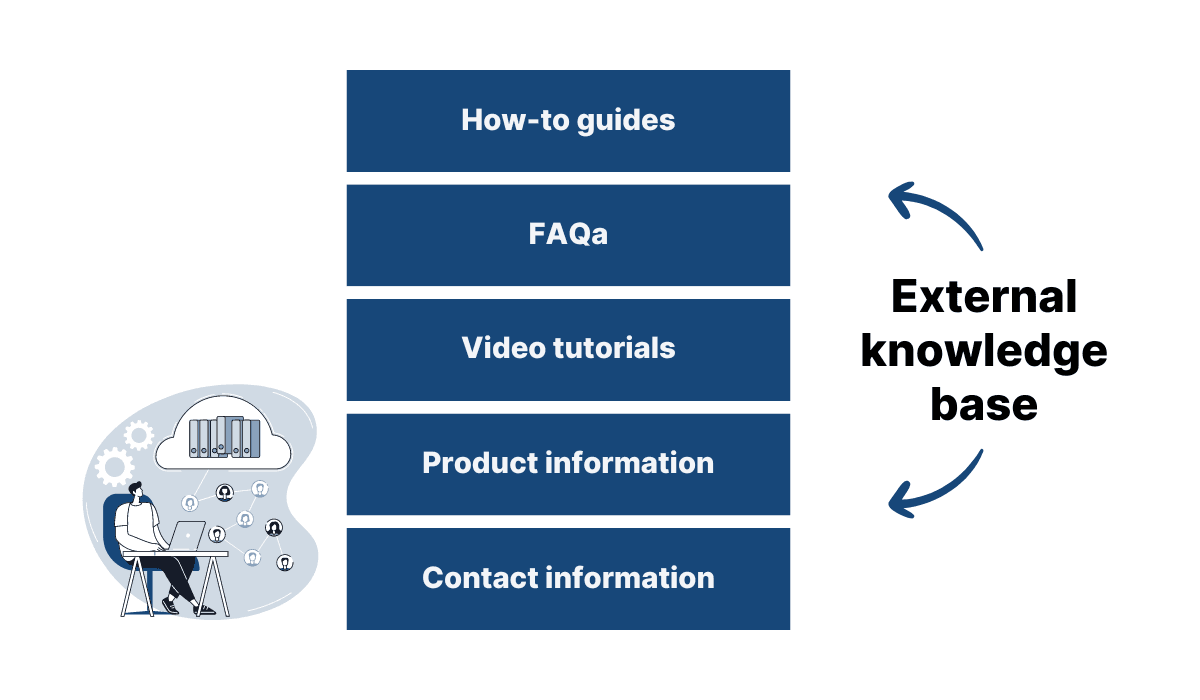
Illustration: Archbee
As you can see, it can be anything that helps your customers get the most out of your product as long as it’s accessible, accurate, and easy to understand.
Internal vs. External Knowledge Base: Key Differences
Now that we’ve examined what an internal and external knowledge base is, it’s clear that, despite being essential sources of information, there are some key differences between them.
Let’s start with the target audience.
As we’ve mentioned, an internal knowledge base is aimed at company employees, and it provides them with the information they need to deliver the best possible results, whether it’s product information, work policies, or coding best practices.
On the other hand, an external knowledge base is primarily for the product’s users.
It should have all the information they need to use the product and get value from it, regardless if they are first-time users or already experienced.
With that difference in target audience comes the difference in content.
Internal and external knowledge bases need to provide distinct information.
For example, take a look at the categories on the left-hand side of the screenshot below:
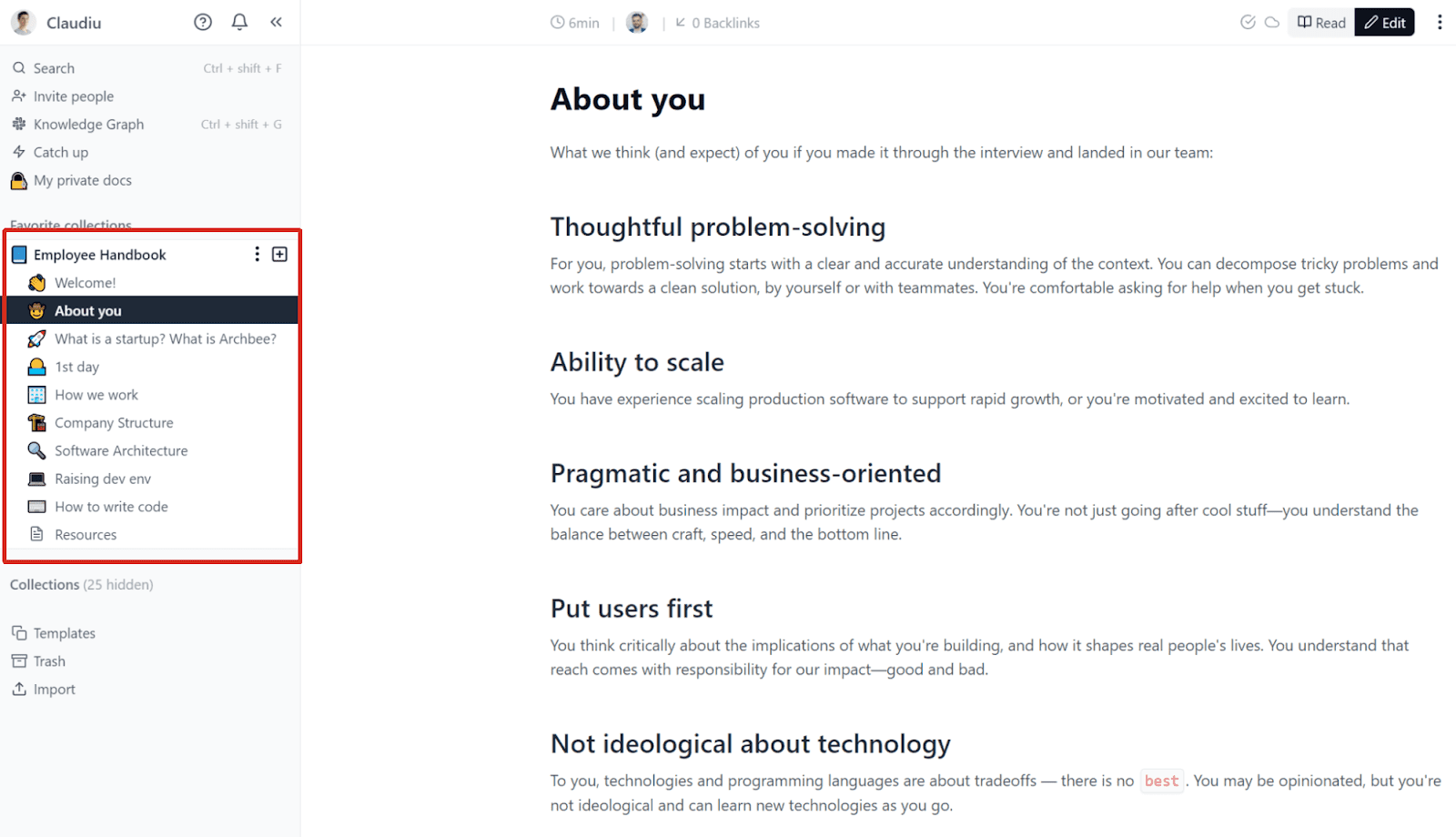
Source: Archbee
Information about the first day at work, company structure, software architecture, code writing, etc., are all valuable for the audience of an internal knowledge base.
However, for the intended audience of an external knowledge base, that information isn’t that interesting.
For them, information like the one Teamwork offers is much more valuable.
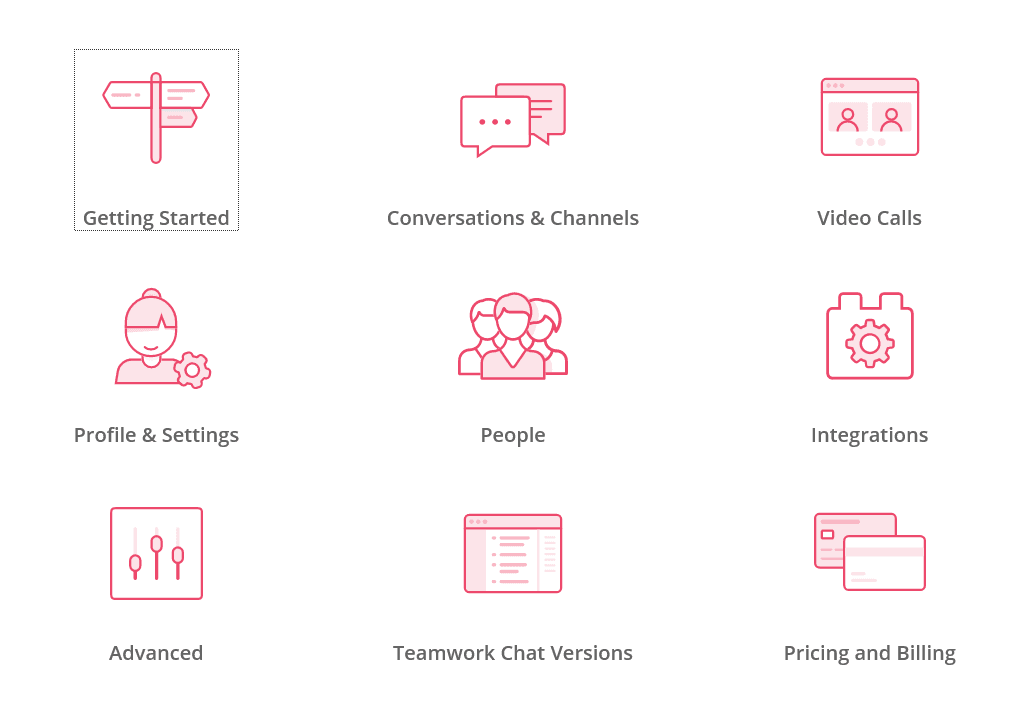
Source: Teamwork
A guide on getting started with the software product, tutorials for video calls and setting up a profile, information about pricing and billing, and other particulars about using the product is what external knowledge bases should be centered around.
Lastly, the significant difference between an internal and external knowledge base is accessibility.
What do we mean by that? Well, since internal knowledge bases are created for company employees, you need login credentials to access them.
The general audience mostly can’t go past a screen like the one below from Slite without the company’s permission.
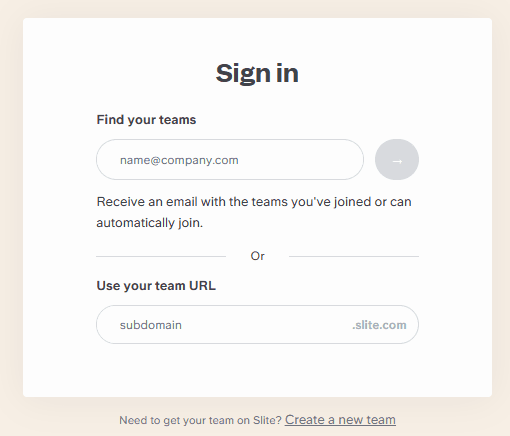
Source: Slite
That is logical because, as we’ve mentioned earlier, internal knowledge bases can contain sensitive information about the company and the products.
On the other hand, external knowledge bases should be available for everyone with access to the Internet.
Why? Because you want as many people as possible to read about your product, its features, and what it can bring to them.
External knowledge bases are an important resource of helpful information for existing customers, but they can also play a vital role in the visibility of your product to a wide range of people.
That’s why you shouldn’t hide them behind login screens. On the contrary, you want customers to access it as easily as possible—for example, through search engines like Google.
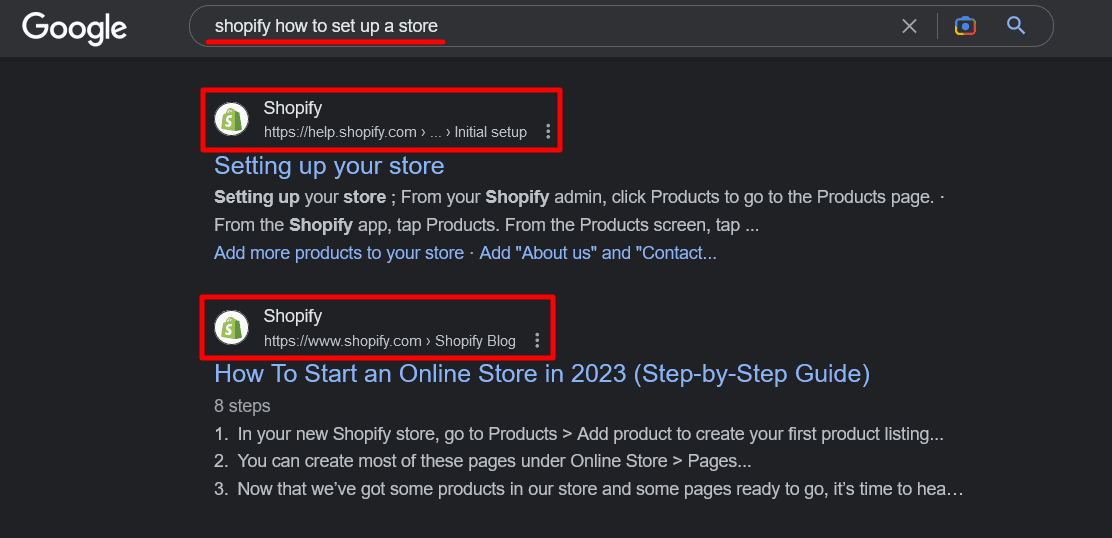
Source: Google
As you can see above, Shopify ensures that anyone interested in setting up a store on their platform is directed to their resources.
That makes sense for an external knowledge base—you want anyone to see how valuable, great, and easy to use your product is.
To sum up, both knowledge bases have differences that separate them. However, are both of those resources important enough to invest time, effort, and resources into creating them?
Let’s dive into that question in the following section.
Internal vs. External Knowledge Base: Do You Need Both
So, an internal and external knowledge base are two different resources, each with its own characteristics, audience, and content. Do you need both?
Let’s start with the internal knowledge base and why you should create one.
As we’ve mentioned, an internal knowledge base is a comprehensive information resource for your employees.
That means they know at any time where they can find information that might be crucial for their work.
And as your organization grows, so does the amount of internal knowledge, and providing your employees with one central hub of knowledge becomes increasingly important.
For example, according to a Nintex survey of U.S. employees across industries and departments, nearly half of them have trouble locating documents when they work.
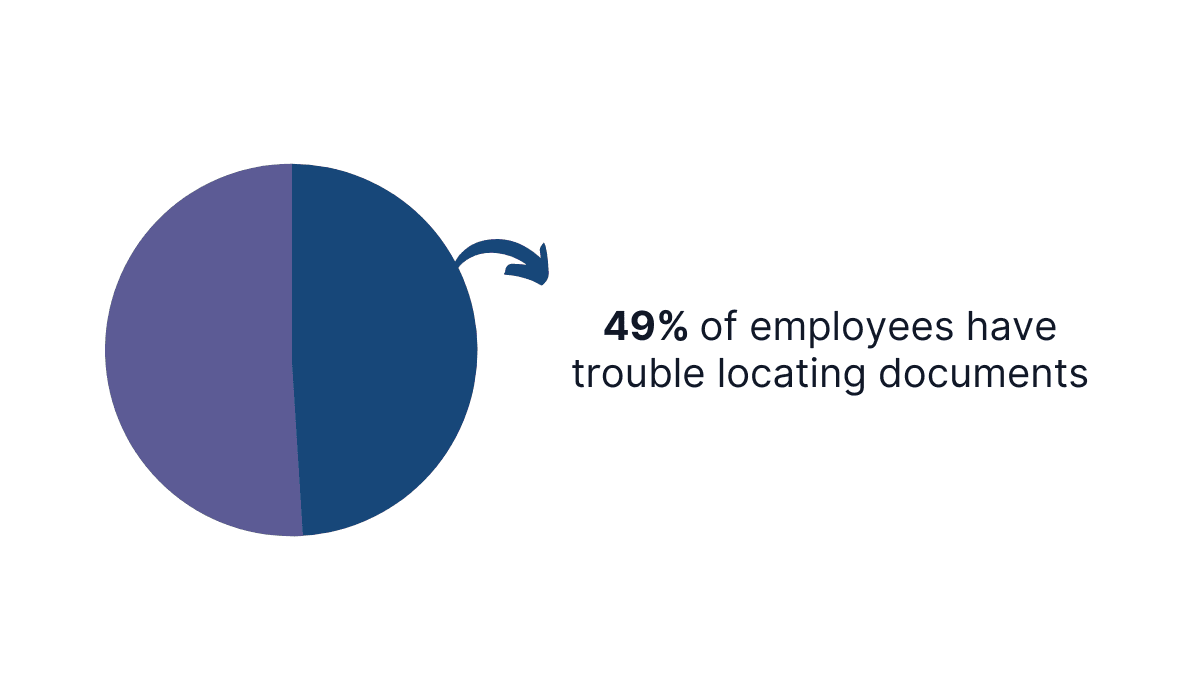
Illustration: Archbee / Data: Nintex
In other words, many employees have trouble finding the information they need, leading to wasting time and less productivity. An internal knowledge base can minimize those issues.
There can be many types of information in an internal knowledge base, but one of the most impactful is onboarding procedures.
Onboarding new hires is a complex process, but if done right, it can result in satisfied employees who stay in the company longer than they would with subpar onboarding.
For instance, having a simple onboarding checklist like the one below can help standardize the process and provide a positive experience for new hires.
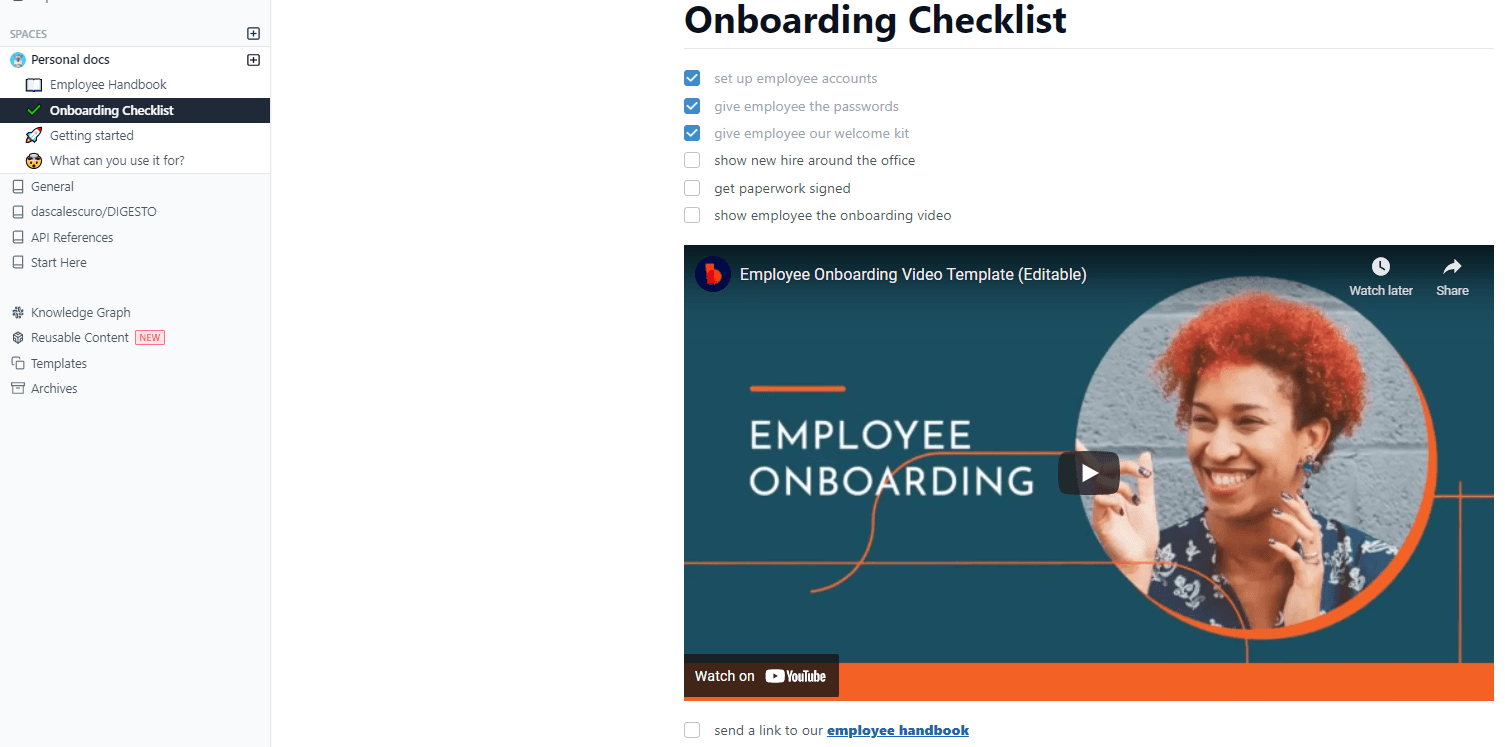
Source: Archbee
With training materials and onboarding procedures in your internal knowledge base, you can significantly improve the retention rate of people coming to your team.
How significant? According to research by Brandon Hall Group, organizations with a robust onboarding process can improve new hire retention by 82%.
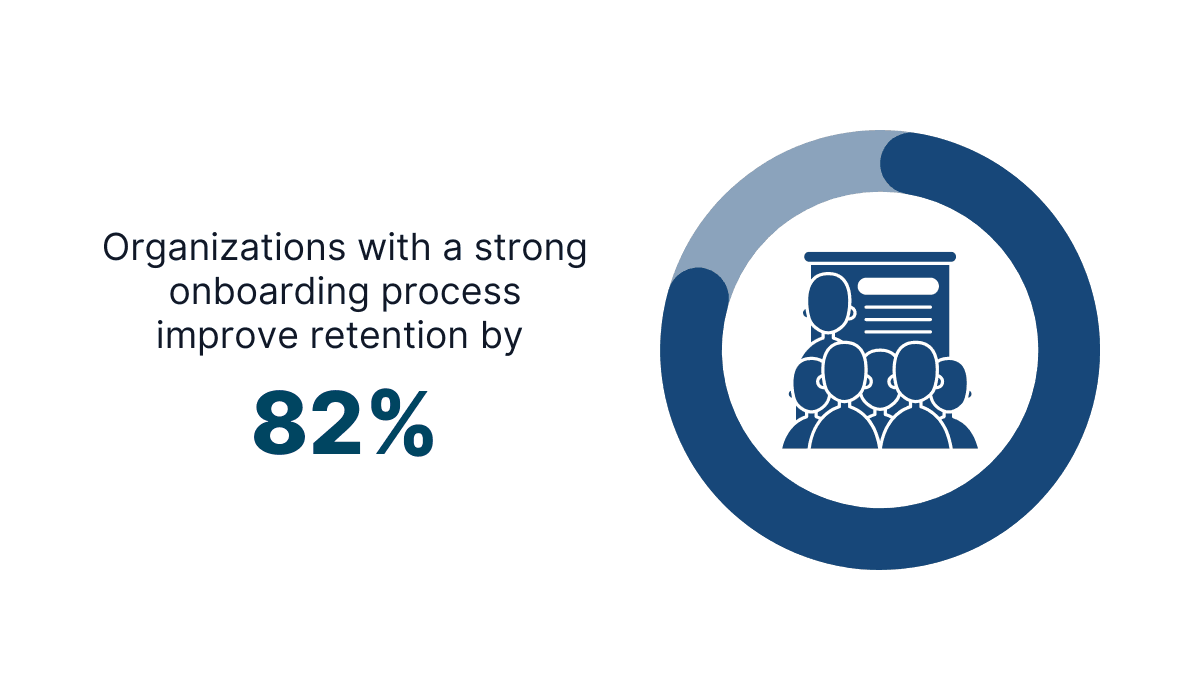
Illustration: Archbee / Data: Brandon Hall Group
If you can have a resource that can help achieve such a retention boost, you should consider it. Luckily, an internal knowledge base can be a resource for that.
But let’s turn our attention to an external knowledge base now because it isn’t any less important.
It’s a self-service option for your customer, whether they want to learn about the features, solve issues, or discover anything else related to the product.
And most of the customers want that self-service option. As Rebecca Lane, a content marketing manager, explains, it gives them a better experience.
You provide your customers with a better experience when you reduce the barriers between them and the answers they need.
Furthermore, many users will try to get the answers they need by themselves.
For example, the data from Higher Logic shows that 84% of them try to solve problems on their own before reaching for help from customer support.
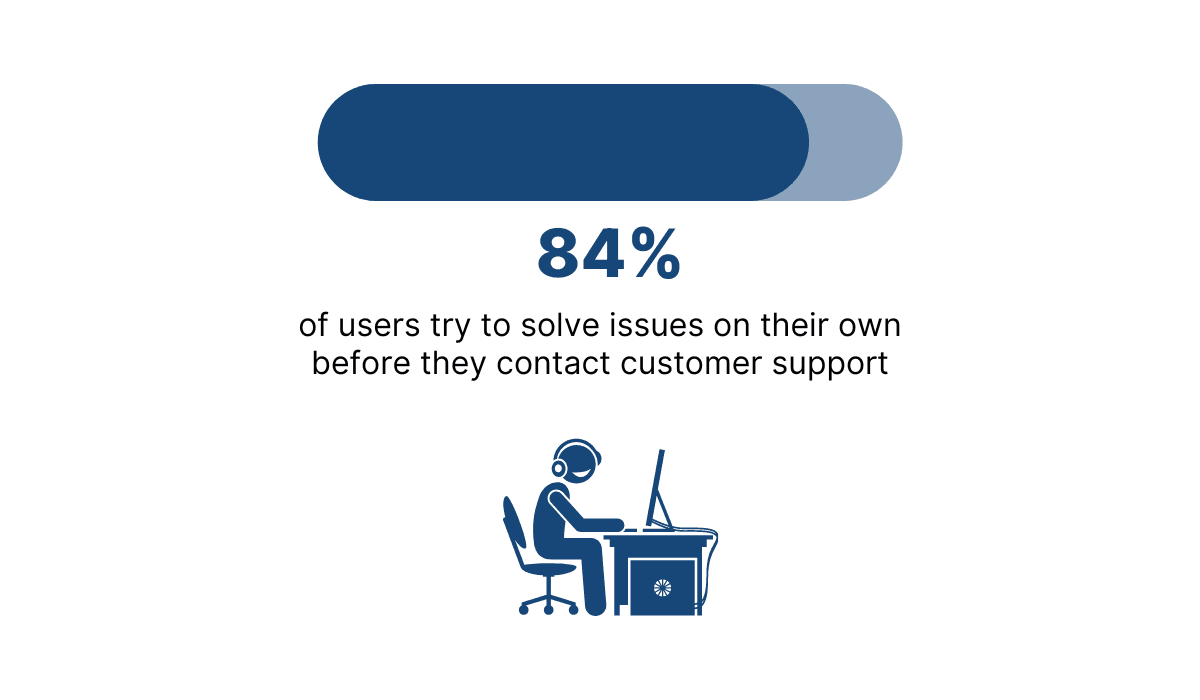
Illustration: Archbee / Data: Higher Logic
Therefore, it would be a good idea to give your customers access to a detailed knowledge base that can serve as a source for all of their product-related needs.
So, do you need both the internal and external knowledge base?
Since they serve different purposes, cater to different audiences, and their content isn’t the same, we advise you to have both.
To accomplish that, you need a documentation tool like Archbee that allows you to create, manage, and publish both knowledge bases.
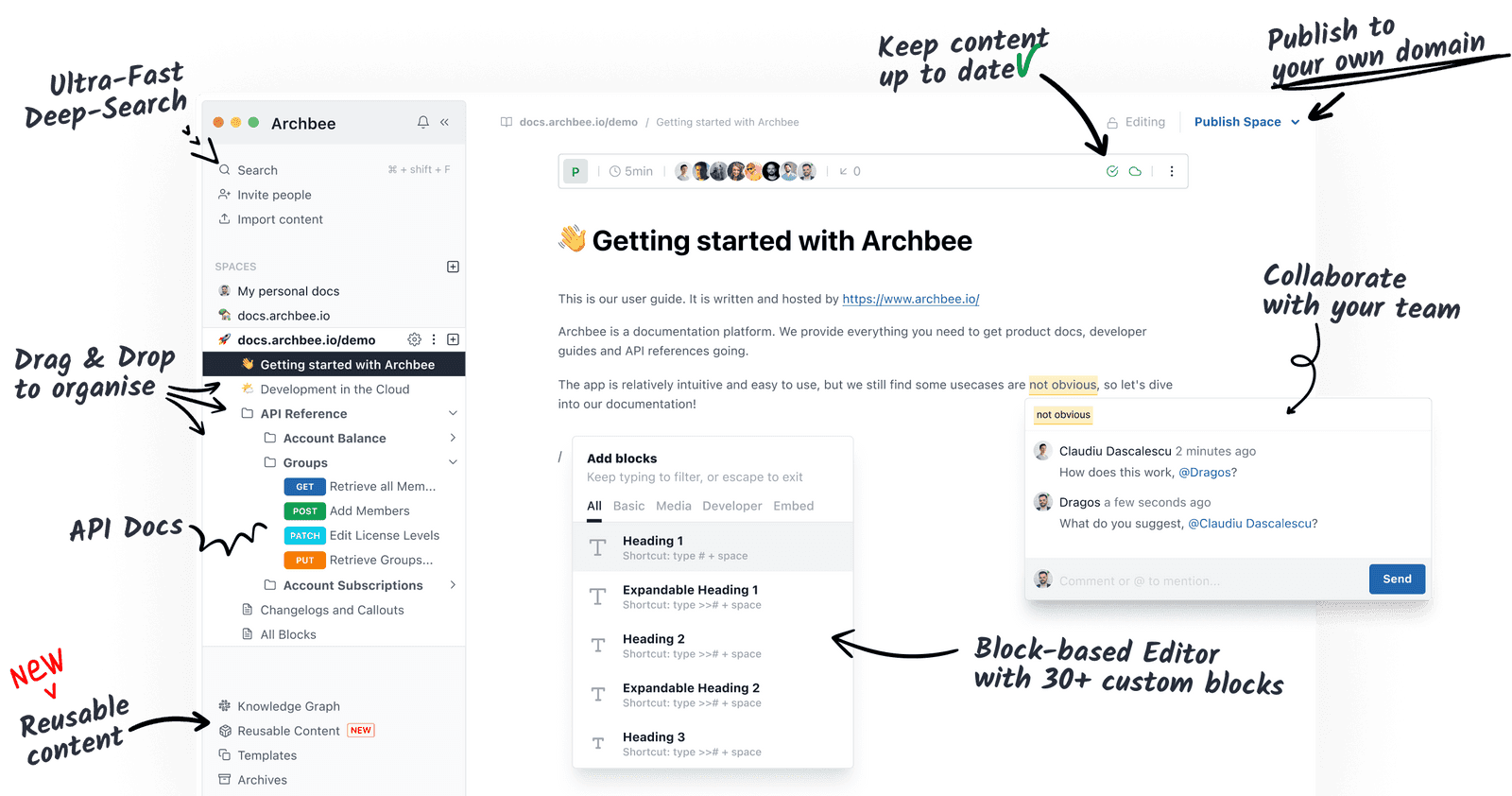
Source: Archbee
Archbee has many features for creating knowledge bases, but one of the most useful is the fact that it provides public access controls.
Why? Because you don’t even need to create two separate knowledge bases, one for company use and one for customers.
You can simply set who can access which parts of one knowledge base.
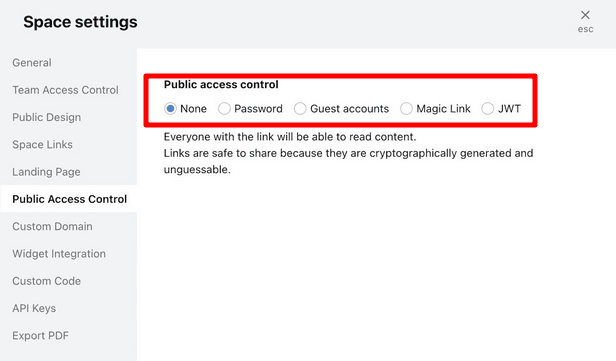
Source: Archbee
Creating a knowledge base is a daunting task, let alone creating two separate ones. Features like controlling access to documents can make it easier.
However you choose to do it, the answer is still the same—you should have both the internal and the external knowledge base.
Conclusion
In conclusion, both internal and external knowledge bases are important for businesses.
Internal knowledge bases provide employees with the information they need to do their jobs effectively, while external knowledge bases give customers the knowledge necessary to use the full potential of software products.
By creating an internal and external knowledge base, you can create a culture of learning and improvement, both in your organization and among your customers.
Frequently Asked Questions
An internal knowledge base is your company’s central, searchable hub for employee information. It stores the policies, processes, how‑tos, onboarding checklists, product specs, engineering guidelines, troubleshooting runbooks, and other “tribal knowledge” people need to do their jobs well. Access is restricted to your team, so sensitive details stay secure. The payoff: faster onboarding, fewer repeated questions, less time hunting for documents, and more consistent, productive work.



